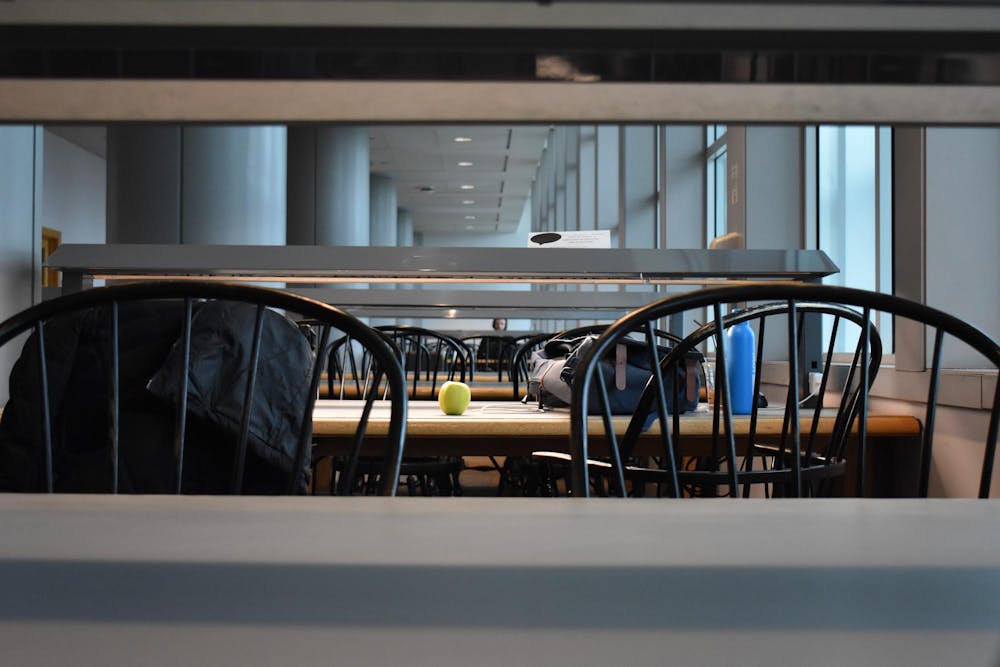The Undergraduate Student Government (USG) Academics Committee publicly announced Princeton’s Syllabus Library on Nov. 8 in an email to students, advertising it as a way to preview courses students may be interested in without actually enrolling. While many students welcomed the library as a new way to explore course offerings, the University has actually maintained the syllabus library since fall 2021.
The library launched in 2021 as a subcomponent of a larger project started in 2019 that worked towards upgrading the University learning management system. The McGraw Center for Teaching and Learning began the project when the University announced the adoption of Canvas, replacing Blackboard. During this time, they formed an advisory committee with ten undergraduate students who regularly provided feedback.
In an interview with The Daily Princetonian, USG Academics Committee Chair Srista Tripathi ’25 shared that USG teamed up with the McGraw Center to “revitalize and publicize” the library after a concerned student shared that syllabi are not posted early enough into the semester, leaving students “relatively unsure what the expectations of the class might look like or what kind of pre-semester assignments they might have.”
However, the library has some drawbacks. The entire library includes on average only about 40 percent of courses offered at Princeton. No courses for the spring 2024 semester have a syllabus uploaded, even as course selection approaches. According to Mona Fixdal, the senior associate director at the McGraw Center, professors are not required to upload their syllabi to the library.
When asked why some professors may opt out of the system, Fixdal responded that she thought professors might want to reserve their syllabus for students enrolled in their classes. She also said that professors expressed difficulty in updating their syllabus with the complicated user interface.
“If faculty feel like it’s better for their needs to share the syllabus in a different way, that’s their choice,” Fixdal said. “We always try to communicate about the options for how to share syllab[i] with their students, and we always highlight the benefit of using the syllabus library,” Fixdal added.
Fixdal helped to organize the larger project. In an interview with ‘Prince,’ Fixdal shared that when making the switch from Blackboard to Canvas, the Canvas Implementation Student Advisory Board expressed that access to syllabi from different courses is “important” during the add/drop period and that the system needed to be centralized for simplicity. Previously, professors uploaded their syllabi individually to various web pages or communicated course information through other avenues, such as email.

McGraw faculty, in response, created the Syllabus Library as an integrated feature with Canvas and announced its implementation on May 6, 2021 through a general Canvas announcement to Princeton users. Access to the library allows students to view the content and requirements of classes from semesters since fall 2021 without directly enrolling in the course. Students can search for individual courses or sort by department and have the option to receive notifications when professors update their syllabus.
Tripathi clarified that while the library already existed under McGraw, USG has added more course syllabi by reaching out to professors and has attracted more students to the site through their endorsement. She adds that with the addition of more syllabi, “[Students] have a better idea of what the class will look like when they’re picking [courses].”
While the McGraw Center does not pressure faculty to upload their syllabus, USG aims to publish a more comprehensive array of courses in the future. Tripathi told the ‘Prince’ that she hopes they ultimately add 100 percent of course syllabi to the library. While they first hope to target larger introductory classes, which typically have syllabi that remain mostly the same each semester, the challenge would be to include smaller, higher-level classes as well.
What the published syllabi show

To analyze the usefulness and accuracy of the syllabus library, and to crunch the numbers on how midterms, finals, and participation are weighted across classes, we looked at a subset of the syllabus library — a sample including 678 syllabi from 2023.
The ‘Prince’ identified over two dozen items in the syllabus library that are not syllabi at all. Documents included a screenshot of a Gradescope login page, a copy of Dr. Martin Luther King Jr.’s Letter from a Birmingham Jail, and documents that simply read “Text goes here.”
Syllabi in the syllabus library have an average midterm weighting of 22.38 percent, final exams weighting of 30.23 percent, and participation weighting of 20.11 percent.
The relative weighting of these three factors varied across departments. For midterm exams, Japanese courses assigned the least weight, with an average weighting of just 10 percent. Finance classes weighted their midterms 40 percent on average.
For final exams, Italian courses assigned a weight of 15 percent on average, while chemistry has the highest average weighting of 47.5 percent.
In regards to participation, Chinese courses had an average participation weighting of just three percent, while Quantitative and Computational Biology courses had an average participation weighting of 50 percent.
Less than a quarter of courses we analyzed had midterm or final exams. 23.2 percent of courses have midterms and 22.3 percent have final exams. Far more courses assess participation, however, with 62.9 percent of the course syllabi taking this into account.
Bridget O’Neill is an assistant News editor for the ‘Prince.’
Rebecca Cunningham is an assistant News editor for the ‘Prince.’
Ryan Konarska is an associate Data editor for the ‘Prince.’
Andrew Bosworth is an assistant Data editor for the ‘Prince.’
Please send corrections to corrections[at]dailyprincetonian.com








